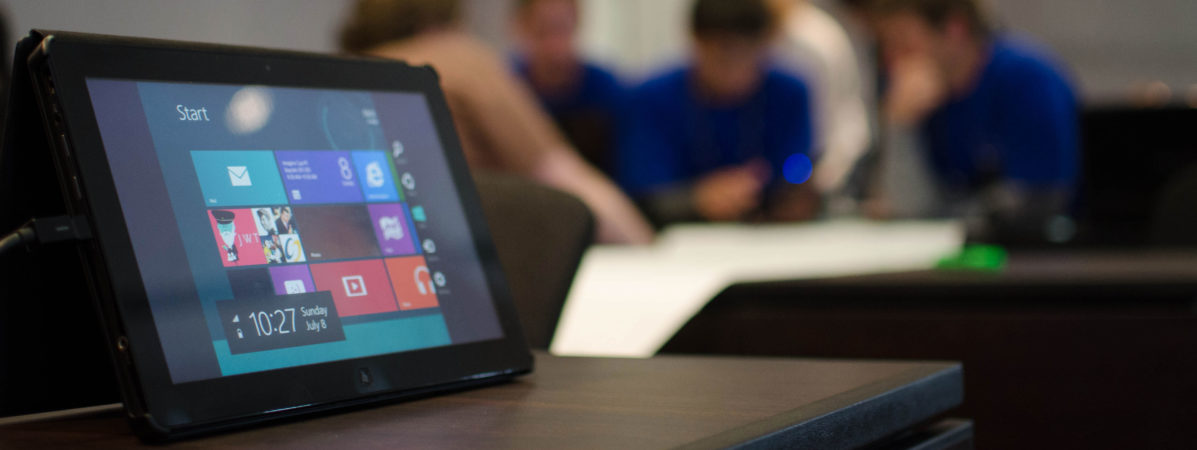
Eamon M. Kelly is the chairman of the Digital Promise Board of Directors and a professor and President Emeritus of the Payson Center for International Development and Technology Transfer at Tulane University.
Vince Juaristi is the chairman of the finance & investment committee for the Digital Promise Board of Directors and CEO & President of Arbola, Inc.
Americans go to the polls next week for mid-term elections. They will have complex, important, and, in many cases, divisive issues to consider. Voters will be encouraged by politicians and legislators to pick sides, with partisanship growing stronger and stronger on many public issues of the day.
Little is mentioned, however, of one issue that has not only garnered bipartisan support but carries the potential to impact children, adults, and the future of education: learning and technology.
While public discussion over important education issues often becomes petty and toxic, there is a national movement of educators working to improve the opportunities for these students to learn through technology.
This is occurring in places like Mooresville, N.C., where, despite ranking near the bottom of the state in funding, the district is second in academic achievement. Its graduates earned more than $2.7 million in scholarships last year and graduation rates are up from 73 percent to 93 percent since 2008. That incredible growth coincides with the 2008 launch of its digital learning initiative, in which all 6,000 students have access to a personal electronic device and students in grades 4-12 receive a laptop in school and to take home.
Mooresville’s accomplishments are not credited simply to devices. The district created a community-wide culture where all stakeholders are dedicated to engaging students. Lectures and textbooks are replaced with collaborative projects that connect with real-world issues. One-size-fits-all lessons become personalized learning, where each student pursues her interests and builds the skills she needs.
Classroom environments where learning is collaborative, self-paced, and attuned to students’ demands is what today’s students will come to expect. Starting in kindergarten, students in Utica, M.I., are engaged in personalized education plans guided by their teachers and aided by learning software. Students use digital tools to learn and create at their own pace, freeing up the teacher for small-group and one-on-one instruction with the students who need it most. Kindergarteners began 2012-13, the initiative’s first year, two to five points below national averages on a widely used math and literacy assessment and finished the year 11-14 points above the average.
Learning technology also helps connect school districts with their communities. In Kent, W.A., students speak more than 130 languages, one of the most diverse districts in the country. To keep families informed about what’s going on in their child’s school, the district partnered with the county housing authority to install wireless kiosks equipped with computers and multilingual online resources in low-income communities. For families new to the American education system and without technology access available at home, the hot spots allow communication with teachers, insights into their child’s academic progress, and access to information about the education system through the district’s Cultural Navigators program.
For all of these districts and more, success is dependent on the people involved, not the hardware and software. Digital learning is a bipartisan movement not because we believe technology itself is the silver bullet to education, but because it enhances the creativity, productivity, and connectivity of the inspiring and talented people in our schools.
Unfortunately, there is a real risk that these innovative school districts will continue to represent the exception and not the rule across America. In an average American school, Internet bandwidth is not as strong as that of the average American home, even though schools serve more than 200 times more people. Too many of America’s roughly 14,000 school districts have not yet grasped the potential of linking technology and education in creative ways to achieve meaningful, lasting results.
We’re working to change this at Digital Promise, a nonprofit organization authorized by Congress to spur innovation in education. Digital Promise is truly a bipartisan movement, authorized in 2008 under President George W. Bush, and officially launched in late 2011 by President Barack Obama.
We recognized early on the extraordinary potential of researching, encouraging, innovating, and developing the nexus between education and technology to address America’s greatest challenges, from classrooms to boardrooms.
Our flagship initiative, the Digital Promise League of Innovative Schools, is a unique national coalition of 57 school districts in 27 states that serve more than 3 million students. Superintendents from big and small, urban and rural, red and blue districts work together to share lessons learned and partner with research institutions, technology developers, and one another to deliver better results for students.
This potential is not limited to just K-12 school leadership. We’re also seeing support for technology’s role in teacher professional development, adult learning, and learning science.
As candidates from both parties talk with voters, debate each other, and reiterate agendas, we hope — and so do the children of America — that they address and commit to how technology can support education, a timely and relevant issue that can benefit us all.